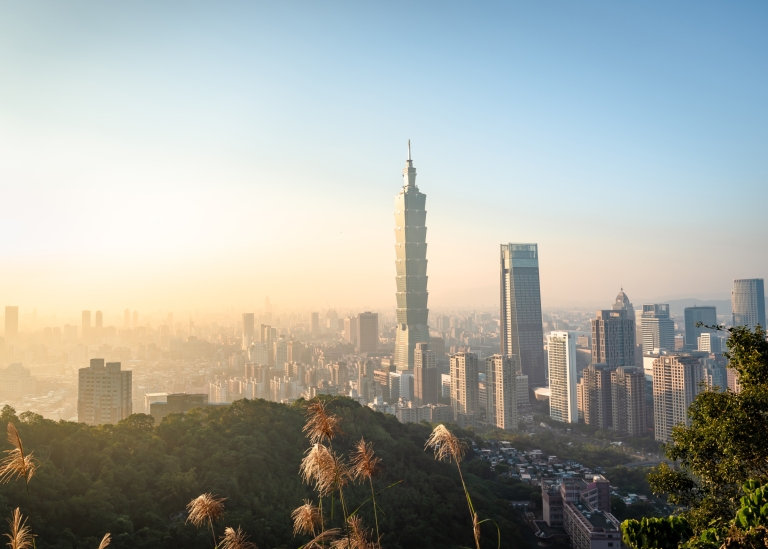Expand into new markets with confidence
Schedule a callRelatively small in size but big in economic ambition, Hong Kong, Singapore, South Korea, and Taiwan are the Four Asian Tiger countries. It sounds like something from a fable, right? Well, what they pulled off, starting in the 1960s, was nothing short of miraculous.
Back then, these economies began transforming at a speed that was, frankly, hard to believe. Rapid industrialization, booming exports, tech innovation, and strong government planning, it all happened at once. They built infrastructure. They invested in education. They focused on skilled labor. And they grew fast. Really fast.
Today, they're among the most advanced economies in the world, competitive, high-tech, and deeply connected to global trade. And if you're a company thinking about expanding into Asia, or any of these four economies, they're not just interesting; they're strategic. They've got the infrastructure, the proximity to major markets, and a track record of welcoming business.
So this guide looks at how each of these Tigers got where they are, and why they might just be the launchpad for your next big global move.
Brief history of the Asian Tigers
The story of the Asian Tigers' transformation begins after World War II. Following the fall of Japanese rule, these countries rapidly rebuilt their infrastructures to compensate for the devastation left by the war. Local governments pushed industrialization, which capitalized on local strengths and export-based economies.
As income and development rose, new consumer and entrepreneurial classes emerged, and the economies expanded. Driven by rapid industrialization and export policies, the Four Asian Tigers have steadily maintained high economic growth rates since the 1960s.
These four economies also recovered strongly from the 1997 and 2008 financial crises due to government stimulus programs in each region and now have some of the world's highest incomes per capita.
Today, the Four Asian Tigers are among the top Asian markets for global expansion.
Get our essential global expansion checklist to learn key tips and insights on how to develop your global expansion strategy, conduct market research, and engage top global talent with compliance:
Hong Kong
Hong Kong is a Special Administrative Region in southern China and one of the world's most densely populated territories, with a population of 7.6 million as of 2025. Hong Kong has a gross domestic product (GDP) of $424 billion, and its location provides foreign investors with a commercial and infrastructural gateway to mainland China.
Key market characteristics
Hong Kong has the most aggressive free-trade policies of the Four Asian Tiger countries. These policies have no import tariffs and only charge excise duties on four commodities: hard alcohol, tobacco, hydrocarbon oil, and methyl alcohol.
Hong Kong is also known for its sophisticated infrastructure, lack of restrictions on inward or outward investment, limited foreign exchange controls, low-tax regime, highly skilled labor pool, and strong finance and marketing sectors.
Hiring or relocating talent in Hong Kong
Work visas in Hong Kong are relatively easy to obtain in an effort to simplify hiring or employee relocation for international companies.
To obtain a work visa, an employee must have a job offer comparable to the existing market rate, and it can't be readily taken by the local workforce. The employee must also have a good educational background and proven professional experience or qualifications.
Looking to hire local talent in Hong Kong? See our Hong Kong hiring guide.
Singapore
Singapore has a population of 6.1 million as of 2025 and a GDP of $564 billion. The country is also one of the world's leading exporters of products and services, a global financial center, and a top market for growing tech companies.
Key market characteristics
Singapore is known for its business-friendly economy and forward-looking government policies. The country works to reduce red tape regarding incorporation, tax forms, and visa applications, making it one of the best places to do business.
Singapore's government also invests heavily in the private sector, offering incentives for businesses.
These business incentives have fueled a massive drive for start-ups to enter the market, making it a top destination for growing tech companies.
Hiring or relocating talent in Singapore
Singapore is also known for its competitive workforce and acute English proficiency. Citizens of many foreign countries don't need to obtain a business visa before arriving in Singapore, but they must obtain a Singapore work pass through their employer and provide proof of a job offer and credentials to work in the country.
Looking to hire local talent in Singapore? See our Singapore hiring guide.
South Korea
South Korea is located on the Korean Peninsula, with a population of 51.7 million as of 2025 and a GDP of $1.79 trillion. South Korea has a well-developed infrastructure, making it one of the most affluent countries in Asia.
Key market characteristics
The government heavily promotes foreign investment in the country by offering tax incentives and grants to foreign companies contributing to the economy. South Korea also helps companies find and pay for industrial sites and helps cover start-up costs.
South Korea has 21 trade agreements with countries and unions, giving local businesses free access to markets worldwide.
South Korea is one of the most tech-savvy countries in the world as a prominent manufacturer of electronics and semiconductors. The country also ranks among the top in the world for patent applications per capita and research and development expenditures.
Hiring or relocating talent in South Korea
South Korea has a highly educated and technologically literate workforce, but it also has a complicated immigration and visa system.
To relocate and work in South Korea, foreign employees must obtain a letter of recommendation from the government and have an established job offer before obtaining the appropriate visa-for which their employer applies on their behalf. The government distributes visas using a points system based on an individual's qualifications and potential to benefit the country.
Looking to hire local talent in South Korea? See our South Korea hiring guide.
Taiwan
Taiwan has a population of 23 million as of 2025 and a GDP of $804 billion. The country's rapid industrialization initially focused on heavy industries, including steel, electronics, and petrochemicals. Taiwan is still a manufacturing hub today, and businesses can build products at a low cost and in a stable market.
Key market characteristics
The Taiwanese government actively promotes foreign direct investment and has simplified the process for international companies to set up and operate.
Taiwan's foreign investment policies largely focus on maintaining its tech leadership, and it has attracted many technology investors due to its infrastructure, large industrial base, advanced research and development, and highly skilled workforce.
Taiwan's manufacturing hub focuses primarily on producing parts, or intermediate goods, that are incorporated into final products elsewhere. High-skilled manufacturing industries drive Taiwan's export economy, especially in electronics and machinery.
Hiring or relocating talent in Taiwan
In recent years, Taiwan has allowed more leeway for international companies to relocate or hire foreign nationals and works hard to ensure that employees can enter the country freely to help bolster the local economy. To obtain a work visa for Taiwan, the sponsoring employer must apply at the Ministry of Labor to onboard their employees after extending offer letters.
Looking to hire local talent in Taiwan? See our Taiwan hiring guide.
Why choose the Four Asian Tigers for global expansion
The Four Asian Tiger countries offer unique opportunities for companies looking to bring their business into a thriving, stable economy for global expansion. Expanding into the Four Asian Tigers is an attractive business strategy for many reasons, including the following:
- Economic growth and stability. These economies have demonstrated resilience and adaptability, even during global economic downturns. Their economic history makes them attractive markets for businesses seeking expansion.
- Strategic location. Each Asian Tiger's location provides easy access to other key regional markets in Asia, making them strategic hubs for trade and commerce and establishing a regional presence.
- Infrastructure and connectivity. The Four Asian Tiger countries facilitate the movement of goods and services with well-developed infrastructure and efficient transportation networks.
- Financial centers. Hong Kong and Singapore offer robust banking and financial services, providing access to sophisticated financial systems and global financial centers.
- Technological advancements. South Korea and Taiwan are leaders in cutting-edge technology and innovation, including industries focusing on semiconductors and electronics.
- Skilled workforce. All of the Four Asian Tigers have highly skilled and educated workforces, having invested heavily in education and skill development.
- Business-friendly environment. These economies attract foreign investment with business-friendly policies, including low taxes and minimal bureaucratic hurdles.
- Diverse consumer markets. The Four Asian Tigers have diverse and sophisticated consumer markets and provide opportunities for companies in various industries.
- Government support. The governments in these markets support foreign direct investment and provide expansion incentives for foreign businesses.
- Trade agreements. The Four Asian Tigers help businesses navigate international trade in their regions through participation in regional trade agreements and economic partnerships.
- Cultural diversity. The Asian Tigers offer culturally diverse workforces and business opportunities that can position companies well for broader success in the Asia-Pacific region.
Pebl puts the Four Asian Tigers within reach
The Four Asian Tigers have grown fast, weathered economic storms, and emerged as global powerhouses. For companies looking to expand into Asia, these markets are attractive for good reason.
But expanding into foreign markets isn't as simple as just signing a contract and hiring a team. There's a lot of red tape: compliance rules, employment laws, and payroll systems that don't match what you're used to. It gets complicated quickly.
That's where Pebl comes in. Our Employer of Record (EOR) service makes it possible to hire and manage people in new countries, without having to set up a legal entity right away, or at all. Our cloud-based platform is like a control center for your global workforce, allowing you to onboard employees, run payroll, manage benefits, and stay compliant, all in one place.
So, if you're eyeing the Asian Tigers and want to move quickly without stepping into a legal or logistical minefield, Pebl can make it all happen. Our Employer of Record services take the messy, complicated parts of managing a team across borders and makes them feel…well, manageable. We offer the infrastructure to expand into new markets, plus a team of experts who understand the local rules and can help you navigate them, country by country, person by person.
Let's talk today to see what Pebl can do for you.
Disclaimer: This information does not, and is not intended to, constitute legal or tax advice and is for general informational purposes only. The intent of this document is solely to provide general and preliminary information for private use. Do not rely on it as an alternative to legal, financial, taxation, or accountancy advice from an appropriately qualified professional. The content in this guide is provided "as is," and no representations are made that the content is error-free.
© 2025 Pebl, LLC. All rights reserved.
Topic:
Global Growth


